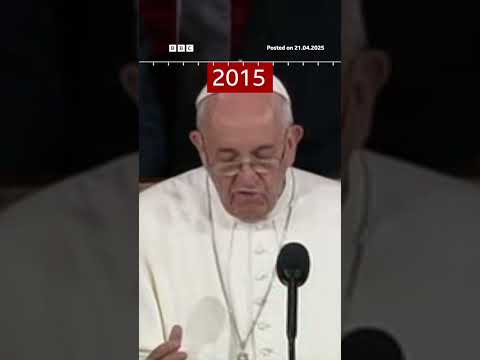In the shadow of a fentanyl crisis, the global cocaine market has exploded, unleashing an avalanche of highly pure cocaine reaching remote regions of Canada. Watch as CBC follows the path of cocaine from a ship off the coast of Colombia, all the way to Sheshatshiu Innu First Nation in Labrador.
»»» Subscribe to CBC News to watch more videos: http://bit.ly/1RreYWS
Pure Hell — Tracking Cocaine from Colombia to Canada
An investigative look into the journey of cocaine from Colombian jungles to Canadian streets, and the devastating consequences left in its wake.
Introduction
Cocaine, a stimulant derived from the coca plant native to South America, has carved a bloody and deeply entrenched path from the Andean highlands of Colombia to the urban centres of North America. Canada, while often perceived as a safe and regulated society, is one of the end destinations in a complex and violent transnational web of narco-trafficking. This article investigates the journey of cocaine from its origins in the jungles of Colombia to its final destination in Canadian hands—exploring the criminal networks, transportation routes, laundering operations, and human cost of this illicit trade.
1. The Source: Coca Cultivation in Colombia
Colombia remains the world’s largest producer of cocaine. In regions such as Nariño, Putumayo, and Norte de Santander, tens of thousands of hectares of coca plants are cultivated. These remote and lawless zones are often controlled by dissident FARC groups, the ELN, and paramilitary factions that enforce their rule through violence and coercion.
Poor farmers, known as campesinos, often have no viable economic alternative but to grow coca. These communities live under constant threat—by traffickers who demand compliance, and by government forces engaging in militarised eradication campaigns.
2. Processing and Production
Once the coca leaves are harvested, they are transformed into cocaine paste in clandestine jungle labs. The process is crude and toxic—requiring cement powder, gasoline, and ammonia. These makeshift labs produce cocaine hydrochloride, the white powder that is then packaged into bricks and prepared for international smuggling.
The drug’s purity, often near 90% at this stage, makes it a high-value commodity. A single kilo of cocaine might cost around $1,500 to produce in Colombia, yet can fetch over $80,000 once sold in Canadian cities such as Toronto, Vancouver, or Montreal.
3. The Narco Highway: Smuggling Routes to the North
Cocaine is smuggled out of Colombia through a variety of routes:
-
Via the Pacific Coast: Cocaine is shipped by go-fast boats to Mexico, Central America, or directly into the United States. From there, it moves northward into Canada.
-
Through Venezuela: An increasingly lawless corridor, traffickers move cocaine overland to Venezuela, where corrupt officials facilitate its exit via air or sea.
-
Using Submarines and Drones: Sophisticated narco-submarines and aerial drones have become increasingly common in evading surveillance.
Once the cocaine enters North America—typically through Mexican or U.S. cartels—it continues its journey through a continent-spanning logistics chain. These include hidden compartments in semi-trailers, inside produce shipments, and via courier services.
4. Organised Crime in Canada
Canada’s role in the international cocaine trade has grown, fuelled by high demand and an expanding organised crime network. The Hells Angels, Asian triads, Italian Mafia clans, and street gangs all compete for control of distribution routes and territory.
Port cities such as Vancouver, Halifax, and Montreal are critical nodes. The Port of Vancouver, in particular, has seen a sharp rise in container shipments from South America, many of which have been used to smuggle narcotics.
Domestic distribution is often handled by local street gangs, who cut the product, distribute it, and deal with any enforcement issues through violent turf wars.
5. The Cost: Violence, Corruption, and Public Health
The cocaine trade leaves a trail of devastation:
-
In Colombia: Armed conflict, deforestation, assassinations of activists, and poisoned waterways are just some of the repercussions.
-
In Canada: Overdoses, addiction, gang violence, and money laundering plague communities. Cocaine is frequently mixed with fentanyl, increasing the risk of fatal overdoses.
-
Globally: Billions of dollars are laundered through offshore banks, casinos, and real estate markets—eroding economies and democratic institutions alike.
6. Efforts at Enforcement and Reform
Both Colombia and Canada have taken steps to address the issue. Colombia has received billions in U.S. aid under programs like Plan Colombia to combat coca production and cartels, though with mixed results. In Canada, law enforcement agencies such as the RCMP, CBSA, and local police forces have made major seizures and arrests, often in collaboration with Interpol and U.S. DEA counterparts.
However, experts increasingly argue for demand-side solutions: decriminalisation, addiction treatment, public health education, and targeting the financial systems that enable laundering.
The cocaine pipeline from Colombia to Canada is not merely a tale of drugs—it is a story of global inequality, corruption, desperation, and profit. Behind every gram consumed in a Canadian nightclub is a complex chain of exploitation and violence. Combating this trade requires more than police raids—it demands a reimagining of both domestic drug policy and international cooperation.
The war on drugs may never be won in its current form, but understanding the full scope of its machinery is the first step in dismantling it.


